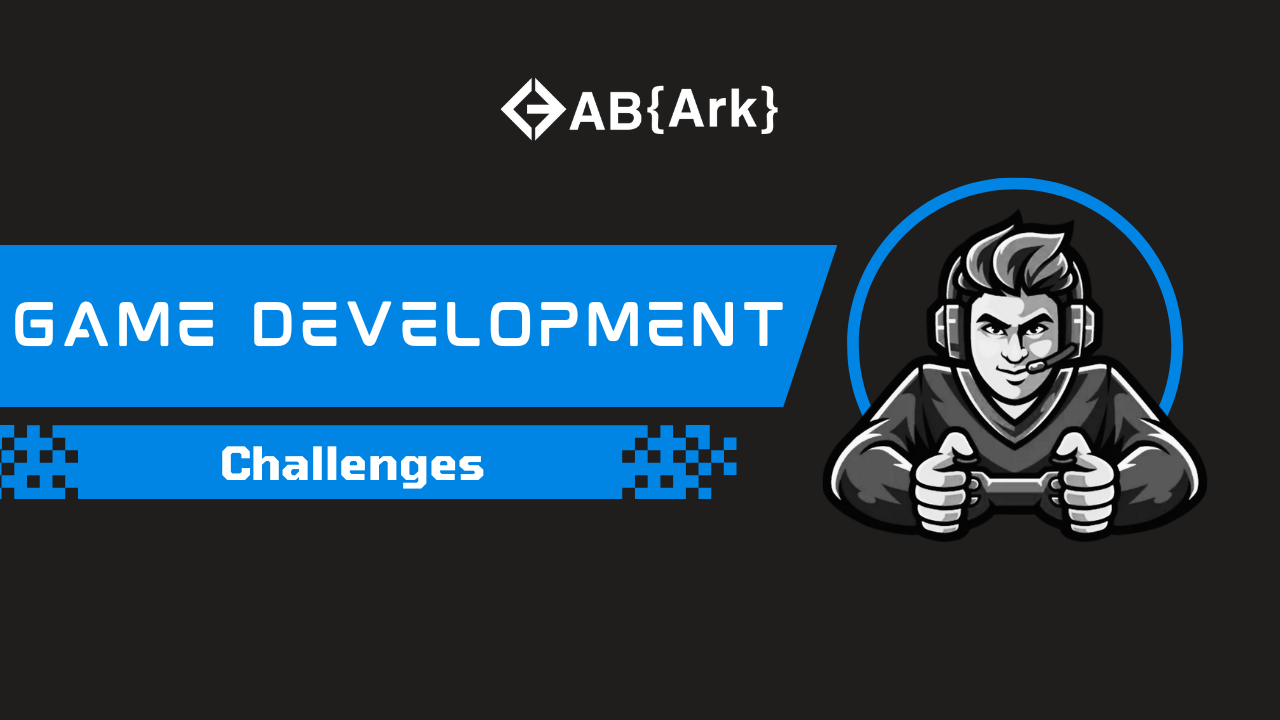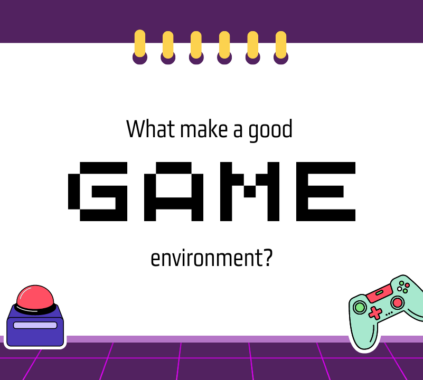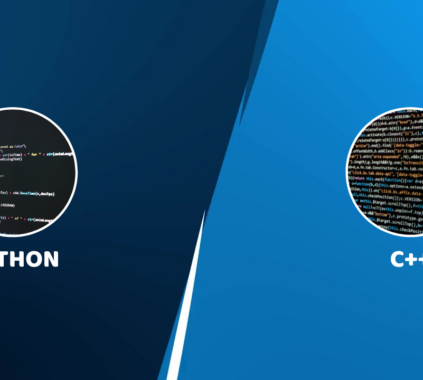Hey there, fellow gaming enthusiasts! Let’s dive into the world of game development companies and the challenges they face. Creating a game is no small feat; it’s a journey full of twists and turns. Whether it’s a small indie studio or a large corporation, every game development team encounters some common hurdles.
Tackling Technical Challenges
First up, the technical stuff. Game development companies often grapple with making sure their games run smoothly on various platforms. This can be tricky, especially when dealing with different hardware and software requirements. Sometimes, these technical challenges lead to extra costs as teams work overtime to fix bugs and optimize performance
Juggling Resources
Next, let’s talk about resources. Developing a game can be expensive, and teams often have to make tough calls about where to allocate their budget. Time is also a precious resource, and developers sometimes find themselves racing against the clock to meet deadlines. It’s all about balancing the dream with reality.
The Creative Crunch and Market Madness
Finally, there’s the creative side. Standing out in the gaming world requires innovation and a unique touch, but that’s easier said than done. With so many games released every year, finding that special something to captivate players is a real challenge. Plus, keeping up with market trends adds another layer of complexity.
But don’t worry, it’s not all doom and gloom! Game development companies have plenty of tricks up their sleeves. From Agile development methods to using powerful game engines like Unity and Unreal Engine, they find ways to turn challenges into opportunities. So, buckle up as we explore how these creative minds overcome the obstacles in their path!
Technical Constraints in Game Development
Alright, let’s talk about some of the nitty-gritty technical stuff that game development companies deal with. It’s not all fun and games—there are serious technical constraints that developers need to overcome to bring their visions to life.
Platform Compatibility and Optimization
One major challenge is ensuring that games run smoothly across various platforms, from PCs and consoles to mobile devices. This requires a lot of tweaking and optimizing because what works on one device might not work as well on another. Developers have to juggle different screen sizes, resolutions, and hardware capabilities. For instance, a game might look stunning on a high-end gaming PC but could struggle on a smartphone.
Handling Hardware Limitations
Another hurdle is dealing with hardware limitations. Not every player has the latest and greatest tech, so developers need to make sure their games can run on older systems without compromising too much on quality. This involves a lot of balancing acts, like cutting down on textures or reducing the number of objects on screen to ensure smooth gameplay.
Bug Fixing and Testing
Let’s not forget about bugs—those pesky glitches that can pop up at any time. Game developers spend a significant amount of time testing and debugging to ensure a smooth experience for players. This process can be tedious but is crucial to avoid releasing a game that’s riddled with issues.
Using Game Engines
To help tackle these challenges, many game development companies use game engines like Unity and Unreal Engine. These powerful tools provide a framework that makes it easier to develop and optimize games across multiple platforms. They come with a range of built-in tools that help with everything from graphics rendering to physics simulation, saving developers a ton of time and effort.
In the end, while technical constraints can be daunting, they also push developers to innovate and find creative solutions. It’s all part of the exciting journey of game development!
Resource Limitations: Budget and Time
Let’s dive into the realities of resource limitations that game development companies face, particularly when it comes to budget and time. These constraints are like the twin dragons of game development, always challenging developers to be resourceful and strategic.
Budget Constraints
Creating a game isn’t cheap! Whether it’s an indie developer or a large studio, managing finances is a constant challenge. Game development budgets can range widely, from a few thousand dollars for a small indie game to tens of millions for a AAA title. Developers need to allocate funds carefully, balancing between paying talented team members, investing in high-quality assets, and marketing the game. For example, a mid-sized game might require a budget of around $5 million, covering everything from salaries to software licenses and marketing efforts.
Time Management
Time is another critical resource that can make or break a game. The pressure to meet deadlines can be intense, especially if the team is aiming to release their game during a specific season or alongside a big gaming event. It’s common for developers to work long hours, often leading to the notorious “crunch time” where they push to finish the game on schedule. However, managing time effectively is crucial to avoid burnout and ensure the game is polished and ready for release.
Balancing Scope and Quality
With limited resources, developers often have to make tough decisions about the scope of their game. This means deciding which features to include and which to cut, all while maintaining a high standard of quality. It’s not uncommon for teams to start with grand ideas and then have to scale back due to budget or time constraints. For instance, a game might initially plan for ten levels but end up with seven due to these limitations.
The Importance of Planning
Effective planning and project management are essential to navigate these challenges. Setting realistic milestones and constantly reassessing progress helps keep the project on track. Many studios use Agile methodologies, which allow for flexible planning and frequent reassessment of goals. This approach helps teams adapt to unexpected changes, such as technical challenges or shifts in market demand.
In the end, managing resource limitations is all about balancing ambition with reality. By being strategic with their budget and time, game development companies can create amazing games without breaking the bank or missing deadlines. It’s a tough job, but the rewards can be worth it when players enjoy the final product!
Creative Challenges and Innovation
Navigating creative challenges and fostering innovation is a key part of game development. It’s not just about coding or designing; it’s also about dreaming up worlds that captivate and engage players. However, this creative journey isn’t without its bumps.
Maintaining Originality
One of the biggest hurdles is maintaining originality in a crowded market. With thousands of games released each year, standing out becomes increasingly difficult. Developers often grapple with the question: “How do we create something new that hasn’t been done before?” It’s a fine line between being inspired by existing games and copying them. In fact, statistics show that about 60% of gamers value originality in games, making it crucial for developers to innovate.
Balancing Creativity with Market Demands
Another challenge is balancing creative vision with market demands. Developers might have a fantastic idea, but if it doesn’t align with current market trends or player expectations, it might not be commercially viable. For example, while a niche game might have a unique and creative concept, it might only appeal to a small audience. This can be risky, especially when significant investment is on the line.
The Role of Feedback and Iteration
Feedback and iteration are critical in overcoming creative challenges. During the development process, teams often engage with beta testers and focus groups to refine their ideas. This feedback loop helps in honing gameplay mechanics, storytelling, and overall player experience. It’s like sculpting—starting with a rough shape and refining it based on feedback until it becomes a masterpiece.
Encouraging Innovation in Teams
Fostering an environment that encourages creativity is also essential. Game development companies often hold brainstorming sessions, game jams, and workshops to spark new ideas. Encouraging team members to think outside the box and experiment without fear of failure is key to pushing creative boundaries. Some of the most innovative games have come from ideas that seemed crazy at first!
The Challenge of Keeping Up with Technology
Staying updated with the latest technology is another aspect of innovation. As technology evolves, so do the tools and possibilities in game design. Developers have to continuously learn and adapt to new software, graphics engines, and design methodologies. This constant learning curve can be both exciting and challenging, as it opens up new possibilities for creative expression.
In summary, while creative challenges in game development are significant, they also offer a chance for innovation and originality. By balancing creative vision with market realities, embracing feedback, and fostering a supportive environment, game developers can overcome these challenges and create unique, engaging experiences for players. It’s all about pushing the boundaries and finding that perfect blend of creativity and practicality.
Market Saturation
In the ever-growing gaming industry, market saturation is a significant challenge for game development companies. With thousands of games released annually, standing out becomes increasingly tough. Players have a wealth of options, making it harder for new titles to grab attention. This competition is especially fierce when up against well-established franchises with loyal fan bases.
Competing with Established Franchises
Established franchises have the advantage of brand recognition and a dedicated following, making it challenging for new games to break through. These franchises often come with large marketing budgets and resources, making them hard to compete against. For example, blockbuster games like those from the “Call of Duty” or “FIFA” series dominate sales charts and media coverage, leaving little room for newcomers.
Building a Unique Selling Point (USP)
To succeed in such a saturated market, it’s crucial for developers to identify and highlight a Unique Selling Point (USP). This could be an innovative gameplay mechanic, a compelling storyline, or distinctive visual art. A strong USP not only sets a game apart but also gives players a reason to choose it over other options. For instance, games like “Among Us” and “Minecraft” became hits by offering something unique and engaging, despite being developed by smaller teams.
Importance of Unique Gameplay Mechanics
Unique gameplay mechanics are often the key to a game’s success. Players are always looking for new experiences, and a fresh gameplay twist can be a major draw. Whether it’s a novel combat system, a unique puzzle-solving element, or an innovative multiplayer feature, originality can captivate players and encourage word-of-mouth promotion.
Marketing Strategies for Visibility
In addition to having a strong USP, effective marketing strategies are essential to increase visibility in a crowded market. This includes leveraging social media, engaging with gaming communities, and utilizing platforms like Twitch and YouTube for influencer partnerships. Hosting live events, offering exclusive previews, and engaging in early access programs can also help build anticipation and buzz around a game. A well-executed marketing campaign can make all the difference, helping a game to stand out and attract attention.
Team Dynamics, Monetization, and Other Challenges
Game development involves navigating complex team dynamics, where effective communication is key to success. Teams often face challenges like miscommunication and differing creative visions, which can hinder progress. A strong, respectful team culture can help overcome these obstacles.
Monetization is another critical aspect, with popular methods including in-game purchases and advertisements. The goal is to find a balance that doesn’t alienate players, avoiding overly aggressive monetization tactics.
Additional challenges include meeting deadlines and managing player expectations. Engaging with the gaming community and being transparent about development progress can help build trust and loyalty. Staying updated with industry trends and technologies, such as virtual reality and blockchain, is also crucial for staying competitive.
Overall, addressing these challenges requires a combination of good team dynamics, thoughtful monetization strategies, and adaptability to new industry trends.
Monetization Strategies
In the world of game development, finding effective monetization strategies is crucial for financial success. However, implementing these strategies can be challenging, as developers must balance the need for revenue with maintaining player satisfaction.
Challenges in Implementing Monetization
One of the main challenges is ensuring that monetization doesn’t disrupt the player’s experience. Players often react negatively to aggressive monetization tactics, such as pay-to-win mechanics or intrusive ads. For example, while in-game purchases are a popular method, they can frustrate players if they feel like they have to spend money to progress or enjoy the game fully.
Balancing Player Satisfaction with Revenue Goals
The key is to strike a balance between earning revenue and keeping players happy. Offering valuable content that enhances gameplay, like cosmetic items or expansions, can encourage spending without alienating players. It’s also important to ensure that free-to-play users can still enjoy the game without feeling pressured to make purchases. According to industry trends, games with fair and transparent monetization practices tend to build stronger, more loyal player bases.
Diversified Monetization Models
Diversifying monetization models can help spread risk and appeal to different types of players. In-game purchases, such as cosmetic skins or items that don’t affect gameplay balance, are a common strategy. Subscription models, offering access to exclusive content or features, can provide a steady revenue stream. Crowdfunding is another option, particularly popular among indie developers, allowing players to support game development directly.
By carefully considering and implementing these strategies, game developers can create a sustainable revenue model that supports both their financial goals and player satisfaction. This approach helps build a positive reputation and encourages long-term player engagement, ensuring the game’s success in a competitive market.
FAQs
1. What are the common pitfalls in game development?
Common pitfalls in game development include scope creep, poor project management, and inadequate testing. Scope creep occurs when additional features are added beyond the initial plan, leading to delays and increased costs. Poor project management can result in miscommunication and missed deadlines. Inadequate testing can cause technical issues and bugs, negatively affecting the player experience.
2. How can indie developers compete with big studios?
Indie developers can compete with big studios by focusing on unique and innovative gameplay experiences. They often have the flexibility to experiment with new ideas and can build a strong community around their games through social media and direct engagement. Crowdfunding platforms and indie game showcases can also help them gain visibility and financial support.
3. What role does community feedback play in game development?
Community feedback is crucial in game development as it helps developers understand player preferences and identify potential issues early on. Engaging with the community through beta testing, forums, and social media can provide valuable insights that guide development decisions. This feedback loop can enhance the game’s quality and ensure it meets player expectations.
4. What are some effective monetization strategies for games?
Effective monetization strategies include in-game purchases, such as cosmetic items, subscription models for exclusive content, and crowdfunding for initial development funding. The key is to offer value without disrupting the player experience. Transparent and fair monetization practices can help build a loyal player base and encourage ongoing support.
5. How do developers handle the challenge of market saturation?
To handle market saturation, developers focus on creating a Unique Selling Point (USP) for their games. This could be a unique gameplay mechanic, an engaging storyline, or distinctive visual art. Additionally, effective marketing strategies, such as social media engagement, partnerships with influencers, and participation in gaming events, can help increase visibility and attract players.
As you embark on your own game development journey, remember that perseverance and adaptability are key. Whether you’re a seasoned developer or just starting out, don’t hesitate to engage with your community and continuously seek feedback. Ready to take your game to the next level? Start implementing these strategies today and bring your unique vision to life!










